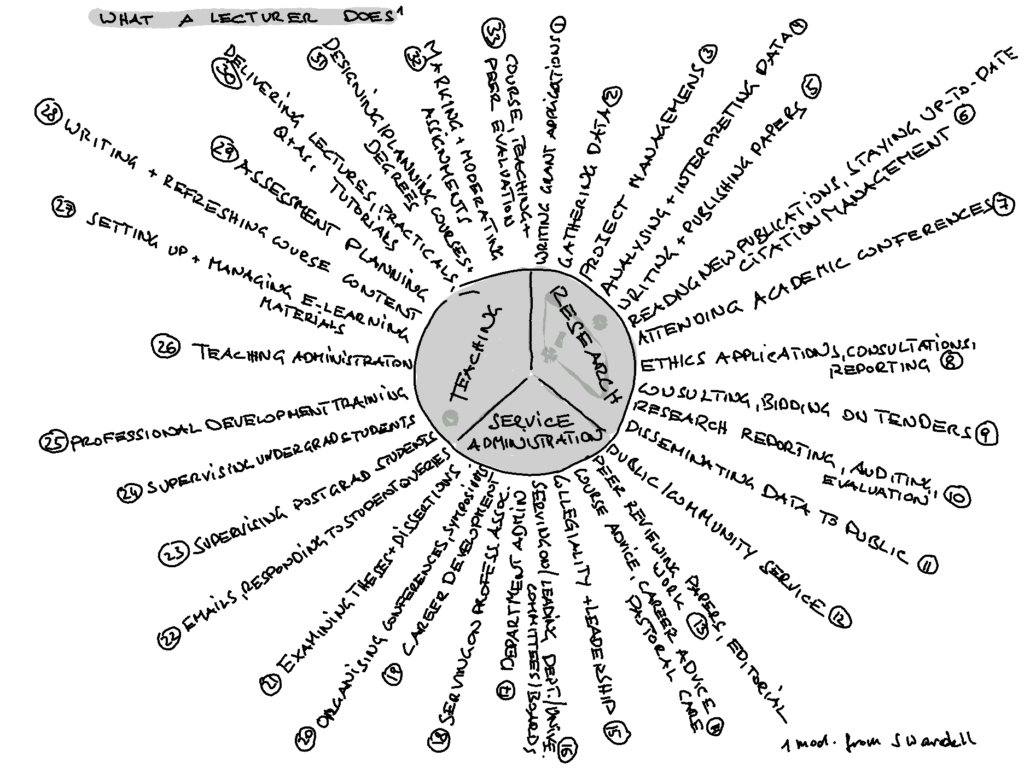
What a lecturer does

Reader in Structural Geology, University of Edinburgh, UK
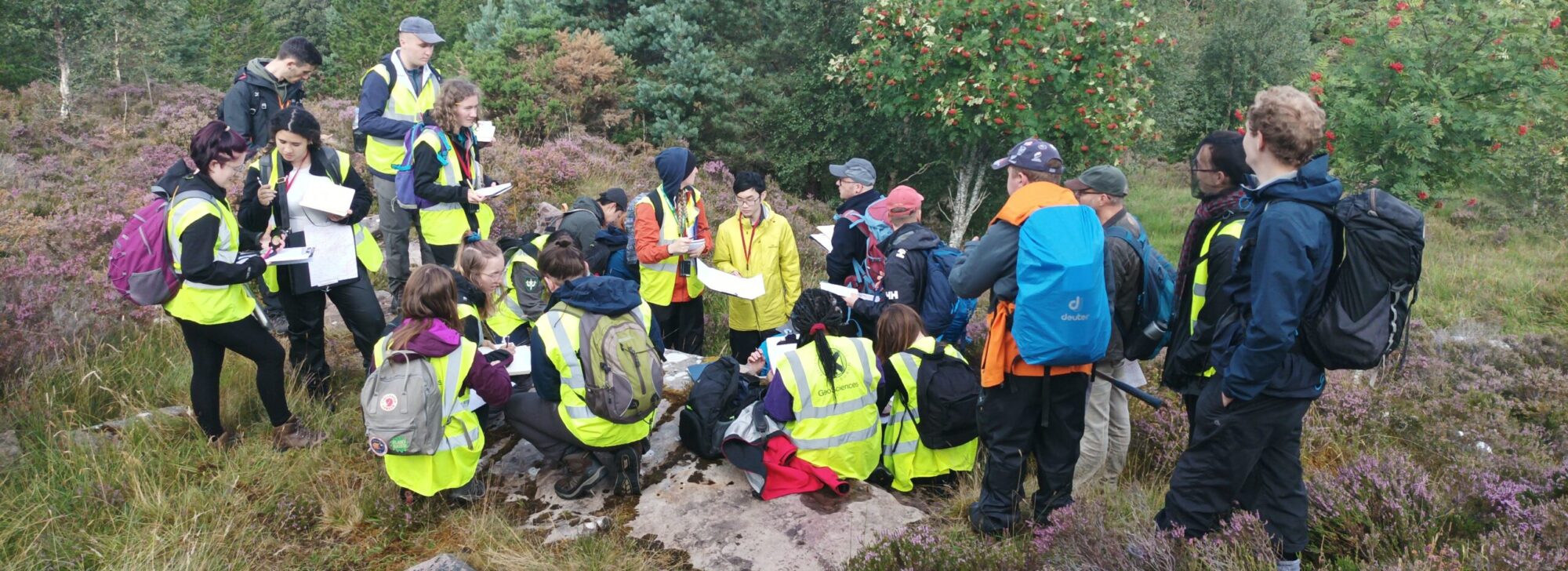

We have just completed delivery of an intense three weeks of field training to our incoming 4th year students, and will be introducing them to their dissertation field areas in the coming days. Under normal circumstances, these students would have been in Inchnadamph (Scottish Highlands) in May last year, and in southern Spain in April this year, before embarking on their independent mapping dissertations over summer. Since the little virus prevented that, we were forced to rethink our teaching here. However, I think we've actually done a really good job. We replaced the first week of the Inchnadamph field trip with an online version, where students practiced the principles of decision making and documentation in geological mapping, and then followed up on this with an abbreviated, eight-day field trip in mid August, which I led. As part of that, students mapped the Ullapool Valley.
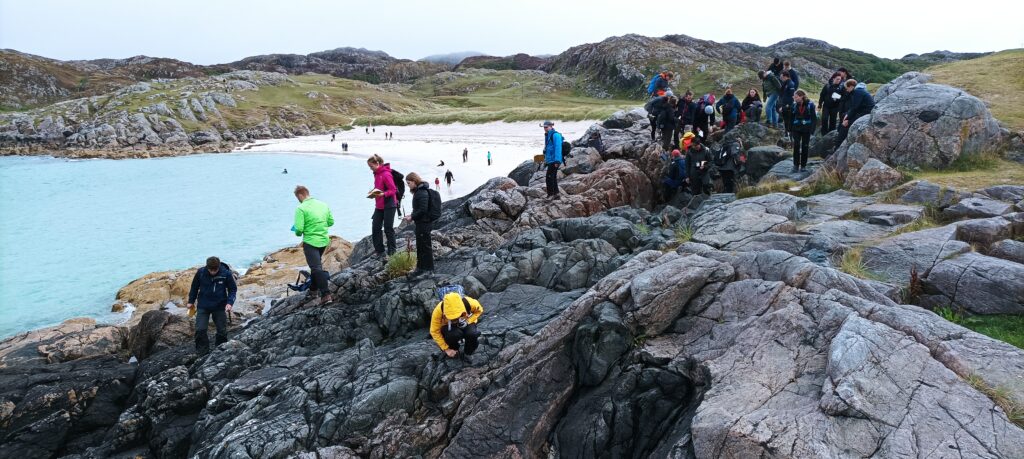
After a week's break we then embarked on what was last year still called the Spain replacement field trip, but what has become the Midland Valley field trip. Ten days of intense field techniques training at sites in E Lothian, Perthshire and Fife. We were really lucky with the weather, and managed to really advance students' skills (my impression). Whilst certainly tiring (and some longish drives), it brought students whose field training was severely affected by Covid pretty much up to the level of normal years, and put them in a good position to do decent jobs in their mapping dissertations. What all of the teaching staff found was that we are really blessed with great geology in the immediate vicinity of Edinburgh - a great playground for geologists!
For next year, we do hope to return to our normal teaching schedule, with Inchnadamph and Southern Spain forming the pillars of our field training programme, and dissertations being largely independently organised by the students. However, should we find the room in the curriculum for a few extra excursions, we don't have to venture far.
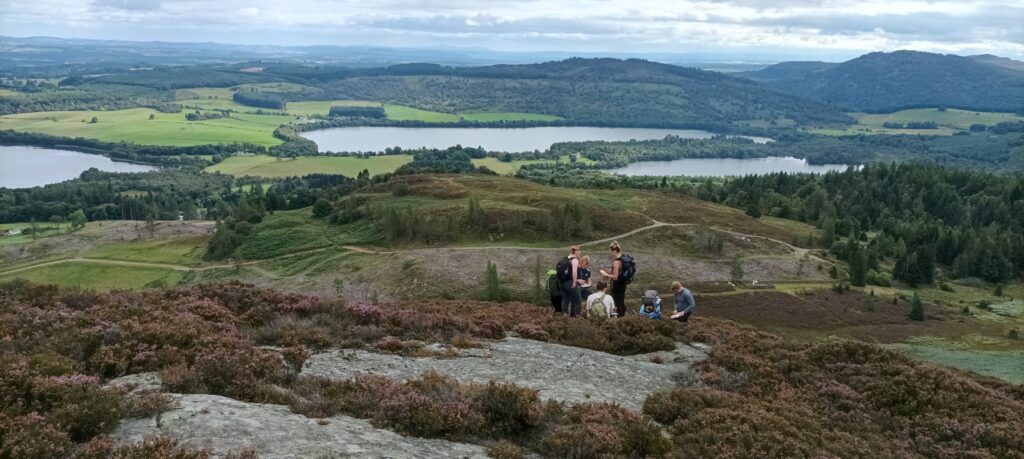
Well, that was a successful week, I would say. We managed to run all the gypsum dehydration experiments we wanted (varying pore fluid pressure and differential stress), do a number of very nice KBr/KCl replacement reactions with Oliver Plümper and his students and also run the first real-life tests with our new triaxial rig Heitt Mjölnir, which performed extremely well. And it was really good to get out of Edinburgh again, and have a productive, fun time with our team. And, on the team, it was really great to see how much routine we have by now, and how smooth everything runs. There was not a single hick-up that cost us any significant time. Damien and I are working the experimental setups and maintenance quite smoothly, and Roberto is the king of data acquisition and management. And the chaps from Utrecht fit in perfectly, too. And support on the beamline by Federica Marone and Christian Schlepütz was perfect as usual.
We knew that we could run the gypsum dehydration experiments in Mjölnir relatively easily, but for the first time now we also had full control of the pore fluid pressure, having added a new component to Mjölnir that allowed us to feed fluid through the top piston and past the ram. Also, we now have, for the first time, properly used an LVDT on the rig, which measures the piston displacement very accurately. We had some minor issues at the onset when we ran the experiments at 115 °C and the reaction was too slow (probably inhibited to a degree by the pore fluid pressure), but we overcame these by increasing the temperature slightly. After that, everything went really smoothly.
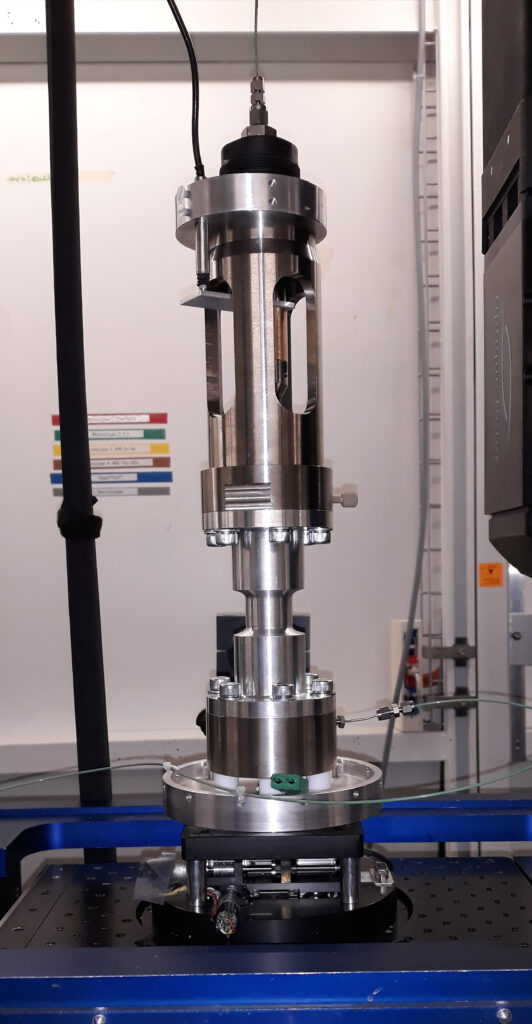
I was particularly pleased with the tests on Heitt Mjölnir. We weren't quite sure whether we could actually see through the rig with the x-ray beam available at TOMCAT (modelling and initial tests with dummy parts left some doubts on how fast we could acquire images). But when we finally had the rig installed at the beamline and the light came on, it turned out that Heitt Mjölnir is definitely transparent enough, even with a copper jacket - excellent news. We did two deformation experiments at room temperature to test practical operations, and eventually settled on an imaging routine that will cover the entire sample (8x18 mm) with 2.75 µm voxel size in eight scans, each of which is 4 seconds. Every 3D dataset is going to be 100 GB, about 4000x4000x8000 pixels. Quite humongous!
Also, henceforth we will not be bringing hard drives anymore, as we will transfer all data with Globus, a grid-ftp service, and which allows us to transfer the incoming data directly to our data store in Edinburgh.
Now we just have to manage the challenges that come with UK immigration these days, and as of tomorrow enjoy our compulsory ten days of self-isolation...
After a long Covid-19-enforced hiatus, we finally made it back to Switzerland to conduct a set of dehydration experiments on gypsum (as part of my NERC grant). The goal was to document the effects of pore fluid pressure and differential stress on the reaction. Disclaimer - we don't know in detail yet, as the results all look pretty similar. It will need a proper quantitative image analysis to figure out. What we did see though was the effect of differential stress - and lack thereof - on compaction and also the orientation of the growing hemihydrate crystals.
So, as a reminder, the reaction you see in the image below is CaSO4.2H2O => CaSO4.0,5H2O + 1,5H2O. CaSO4.0,5H2O is a mineral called hemihydrate, or bassanite. Hemihydrate grows in long needles. The reaction produces about 30% negative volume change in the solid phases (because a lot of water is released from the gypsum if heated above 60 °C). In tectonics, that water is considered critically important, as, if it cannot escape, it will increase the pore fluid pressure significantly and this render the system mechanically unstable.
In our experiments, we applied a confining pressure of 20 MPa, or 200 bars, and, to speed things up a bit (time is precious at Synchrotron light sources), we increased the temperature at the sample to 123 °C. The sample in the image below further experiences a pore fluid pressure of 50 bars and no differential stress (i.e. it is in a hydrostatic stress state, which means that the horizontal and vertical forces are equal).
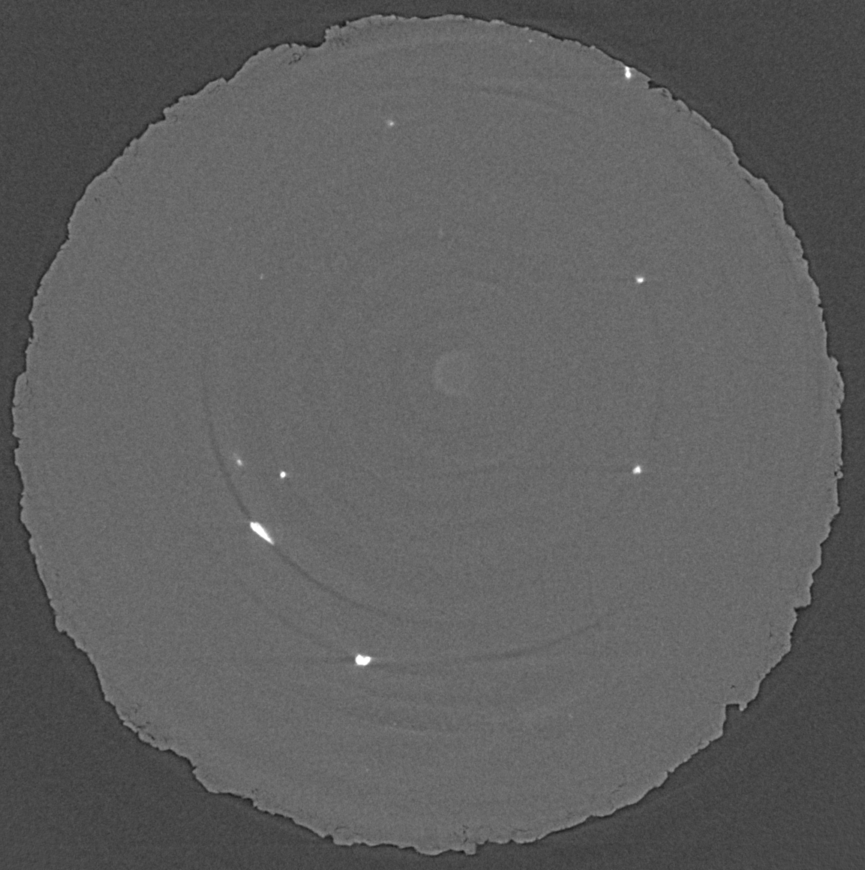
In the picture, you can see hemihydrate needles grow and replace alabaster (a gypsum rock) in different orientations, although most of them are pointing towards you (and you see them in "head cuts"). The sequence covers about an hour worth of reaction. In x-ray microtomography, we don't necessarily see grain boundaries, which is why, at the beginning of the experiment, everything appears uniformly grey. The hemihydrate needles are slightly less dense than gypsum and thus appear in a somewhat lighter grey. What is also obvious is the porosity (which stems from the negative volume change, see above), which appears as dark grey/black. A first for us to document is the shrinkage of the sample (or "compaction" in proper terms), which is cause by the confining pressure (200 bar, remember).
Once at home, we will start quantifying the changes we can see in this image. That includes proportion of gypsum/hemihydrate, from which we can derive a reaction rate. We can also follow the nucleation rate and grain growth of hemihydrate grains, their orientations and fabrics they form, but also the porosity, and how drainage evolves throughout the experiments. Lastly, we hope to be able to quantify how strain is distributed throughout the sample and over time. By doing these analyses for experiments we conducted at different conditions (pore fluid pressures, differential stresses), we hope to be able to draw a clearer picture of how dehydration reactions can influence tectonic processes such as large-scale thrusting. This will be supported by using our data to calibrate computer simulations of the process, which we do in collaboration with John Wheeler from the University of Liverpool. With the data we have acquired over the past three days, we are quite confident that we will achieve that.
Today we are helping Oliver Plümper from Utrecht University to acquire 4D data from a KBr-KCl replacement reaction (I am sure he will post on this). Tomorrow it's our turn again, and we will be testing a new experimental device we have been building over the past 10 months or so, 'Heitt Mjölnir', which is already sitting in our workbench here (see picture below), ready to go. With 'Heitt Mjölnir' we will be able to continue our dehydration experiments with gypsum but, more importantly, also with serpentinite. This is a type of rock that forms from basalts that have reacted with sea water, and forms part of oceanic crust. Serpentinite dehydration is thought responsible for the nucleation of earthquakes in subduction zones. Understanding the processes that lead from dehydration to an earthquake is a kind of holy grale in tectonics, and the ultimate goal of our research. Being able to observe, document and quantify the processes in 4D data is getting us a huge step closer achieving that.
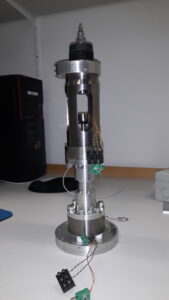
Students, here are three books I would have massively benefitted from in my time at uni. I think you should all get and read them - they will make your life so much simpler:
Once you've made it to the end of your undergraduate years, have a look at the excellent "Ten simple rules" collection by PLOS computational biology.
It seems as if we could go and squash rocks in Switzerland in June! The entire team is excited by the prospect. Logistics are involved but solvable, we will likely drive down to makes sure our equipment doesn't get stuck in customs. Plus, I think everybody is keen on a road trip across Europe, after having been stuck in Edinburgh for over a year.
During this visit, we will mostly work on gypsum dehydration experiments, focussing on the effects of pore fluid pressure and differential stress, all in our tried and tested Mjölnir rig. However, we will also bring our new Heitt Mjölnir rig along, which takes larger, longer samples and comes with massively improved heating (can also go to much higher temperatures). I'd like to do at least one experiment with that rig to do some operational on-site testing and get ready for using it properly during our next visit in early August.
It appears that we will also be running KBr/KCl replacement experiments with Oliver Plümper. That is a really interesting but also very accessible (and fast, seconds!) replacement reaction extensively explored by Christine Putnis and coworkers. Oliver has previously tried to do this in 4D but with limited success. Hopefully we can finally make it work in June!
I definitely look forward to going back to PSI and squash some rocks!
vEGU21 - I've just completed the pico slide, see here. For those looking for the actual website - we have taken this offline to finalise the paper. Thanks for your interest - please keep an eye out for the publication!
This week's a bit quieter than usual, I am working on my contribution to a guide for our virtual field trip, preparing my vEGU presentation on strain shadow megapores and working on two papers, plus on the draft for the next stage paperwork for our new Earth Sciences degree (mostly thinking about the economic aspects). Also, our preparation for dehydration experiments at SLS is going into its final phase, with our new rig Heitt Mjölnir hopefully coming to its completion over the next 2-3 weeks.
I spent yesterday working with QGIS, which is cool. So far, I haven't utilized GIS in any of my field work, but I am discovering the possibilities, and am obviously quite amazed. I really look forward to linking this in with drone data. TBH, I am a little bit awed by the complexity of GIS software, but luckily QGIS is so well community supported that there are solutions for most issues easily available.
My vEGU presentation is going to to be about our latest discovery (of course) - strain shadow megapores. We've been pondering about the name for quite a while, but the more/better I understand what's going on there, the more excited I am about the consequences - I believe we have discovered a new type of synkinematic porosity that has the potential to form relatively substantial fluid reservoirs in ultramylonites.
One of the papers that's very close to submission is on the transport distances in pressure solution creep, which is based on the findings of now Dr Berit Schwichtenberg. Beautiful data, but difficult to analyse conclusively. Given that we believe to have found that diffusive transport distances in pressure solution creep are much larger than previously believed (an idea Macente et al. 2018 already hinted at), these data hold the key to a potential paradigm shift.
And the new degree - economic viability is a key argument here in the UK. In a sense it helps making degrees better, as there are higher demands on streamlining progression and delivery, in other words, make the best possible use of the resources. On the other side, one must be careful not to curtail academic richness. Our recipe will be... (can't talk about that yet).
Heitt Mjölnir, one of our two new x-ray transparent deformation rigs, has come quite far. We found a smart way to even out the temperature distribution around the sample (which was a big problem initially - to get the heat to the right places), now we are working on the sample jackets. That's not a trivial issue either, since our target temperatures (> 300 °C) are beyond the application range of polymers. We need a metal jacket that does not react with the fluid in the sample but also attenuates as few photons as possible, so that our acquisition times (we want to collect 3D data in much less than 30 sec at TOMCAT) don't get negatively affected. Also, the jacket should not be too strong, so that it doesn't affect sample deformation, and it should not deform in a brittle manner (otherwise we might get leaks during the experiment). Gold and platinum are often used in conventional experiments, but they are too heavy (thus attenuating) for us. At the moment, Damien is working with our workshop to see how thin a tube we can produce in-house - currently we stand at 70 µm in Al alloy.
You've found me! Great. The site's obviously about my work, both on the teaching as well as the research side of things. If any of the content inspires you, let me know, also, if any questions remain.
If you are so excited that you want to work with me, get in touch, I am always looking for good students, curious PostDocs and interesting collaborators.
florian.fusseis@ed.ac.uk